The Honest Craft of Artisan Baker Boulangerie Yamashita
Aug 27,2020
The Honest Craft of Artisan Baker Boulangerie Yamashita
Aug 27,2020


What should you serve on your favorite tableware? What tableware should you choose for your favorite food? Time spent reflecting on such questions is very special. In this series, “Tales of Tableware,” our guests share their stories of the tableware and food they love. We also ask them about their lifestyle, passions, and dreams.
In this installment, we talk with Yamashita Yusaku of Boulangerie Yamashita in Ninomiya, Kanagawa Prefecture.
Boulangerie Yamashita is in the sleepy community of Ninomiya in the Shonan region, a part of Kanagawa dotted with popular tourist destinations like Chigasaki and Oiso. When the bakery opens at ten in the morning, a steady stream of shoppers drop in as if lured by the delicious smell of baked bread emanating from the place. It’s bliss to spend time here choosing which of the innumerable breads and pastries on the shelves to enjoy today.
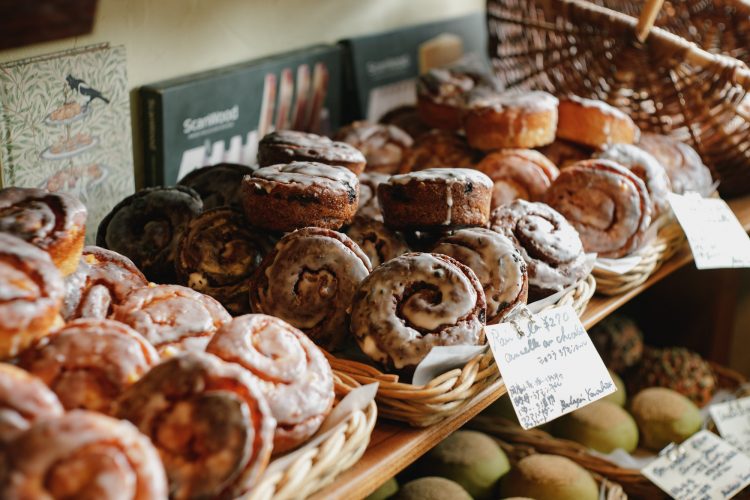
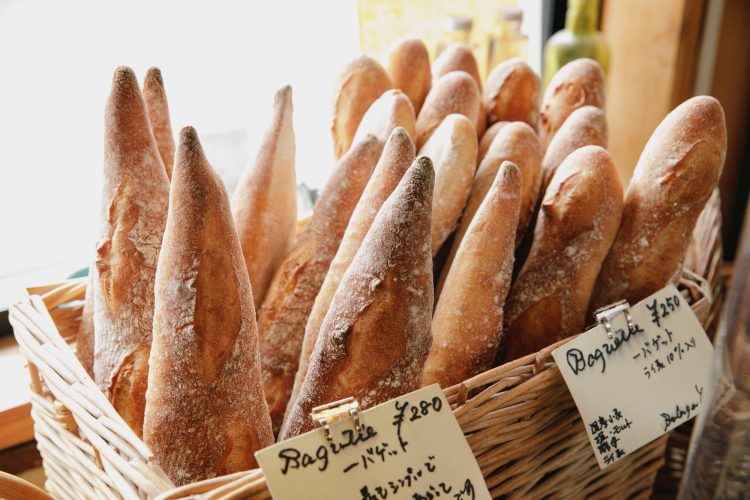
Behind the area where the baked goods are sold is a café where you can enjoy the snack you’ve bought with a drink. It’s furnished with beautiful woodgrain tables and vintage chairs and appointed with lampshades that are striking despite their simple design. The shelves are adorned with tasteful housewares and lined with books.
I sit in one of the chairs, and before long the buns I’ve chosen arrive on a yellow plate. I take a sip of coffee, which is served in a matching yellow cup, and then a deep breath. Everything here feels just right. It’s easy to see why so this place has become a treasured spot for so many people.
Yamashita Yusaku, the owner of Boulangerie Yamashita, studied in Denmark. He then found a job with a Danish furniture manufacturer, where he worked for many years as a store manager. No wonder the items chosen to furnish this space look so elegant and perfectly match the interior.
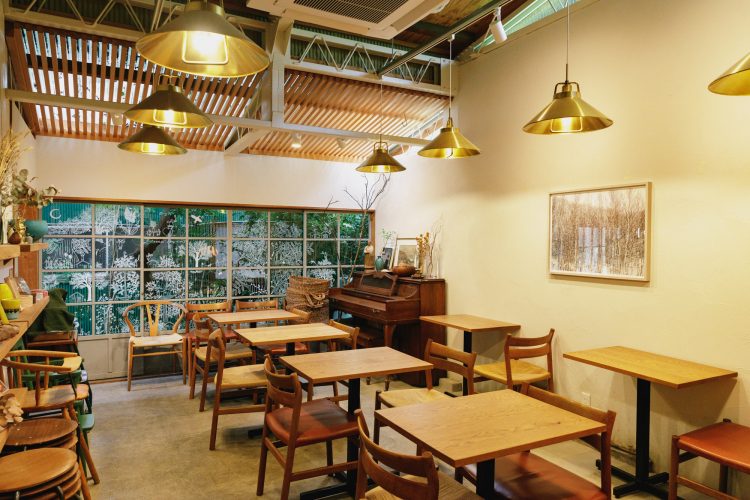
“The tables are of solid Japanese or European oak. They were made for us by someone I used to work with at the furniture company. The chairs are by a Danish designer. They date from the sixties, and they’re really comfortable. I feel they have all the more depth of character because they’ve been used for decades. I asked an acquaintance who was ahead of me at university to make the trays for carrying the dishes.”
Yusaku believes in the warmth of the human touch and old-fashioned dedication and commitment — all the more so because we live in an age of abundance.
“There are lots of factory-made tables and chairs available cheaply out there. It’s the same for bread. Go to the supermarket, and there are shelves full of it. If I was going to have my own bakery in such a day and age, I wanted it to be the kind of place that got across who I am and how I feel. That’s the whole point of this bakery.”
The same thinking lies behind the yellow tableware used at Boulangerie Yamashita, says Yusaku, including the plate and cup featured here. Our discussion of tableware began with his story of why he became a baker in the first place.
Yusaku, who spent a decade as the manager of the Danish furniture brand’s stores in the Aoyama and Ginza districts of Tokyo, was motivated to become a baker by the words of a certain person.
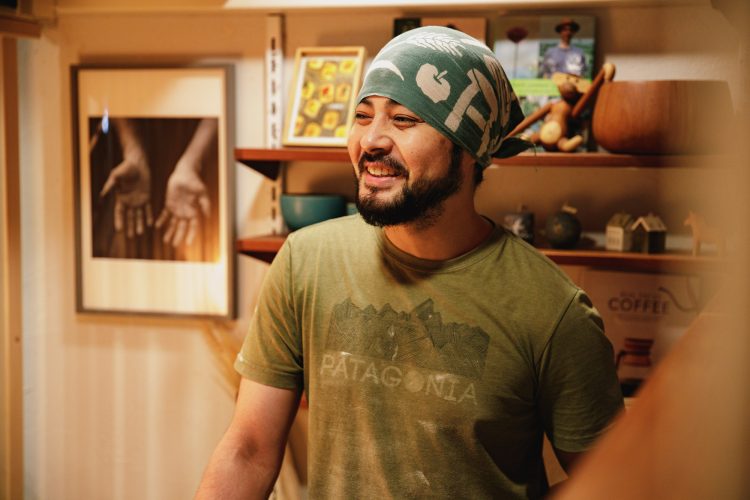
“I thoroughly enjoyed my job in the furniture business. It involved Scandinavia and design, both of which I have a passion for. I was fond of my colleagues and my company. I felt fulfilled. But then one day a customer said to me, ‘Yamashita-san, are you really satisfied with your present life? You know deep down the kind of life you want to live, but you’re not being honest with yourself. You’re girding yourself for life in the big city. But that’s not what you really want to do. Am I wrong?’ Those words cut me to the quick. They hit the nail on the head. I realized that I couldn’t go on like this.”
Yusaku spent his days selling furniture; then, after the store closed, he would drink until late with staff. It was all he could do to keep up with the constantly changing trends of the day. The customer’s remark, though, opened his eyes. He had unwittingly been swallowed up by modern consumer society, he realized. And that lifestyle was making his family miserable.
He quit the store at once and left Chigasaki, where he had been living. In the eyes of those around him, he recalls, he literally went missing.
“I was on friendly terms with the staff at my workplace, I got on well with the people in my community — and then I just disappeared. That’s because I thought I would never find a new life if I didn’t take a break from everything that was preoccupying me. I needed to get away from the society I was then part of, even if that’s how I had to do it.”
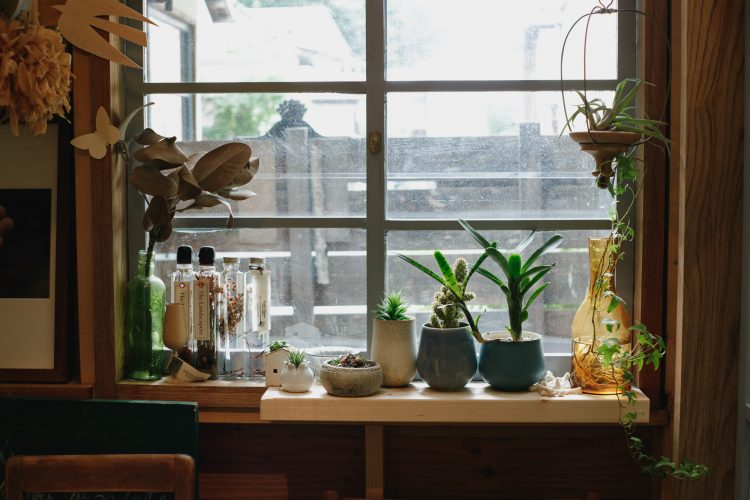
Yusaku spent the next year in a state of flux. He had no job, and psychologically, he lacked the will to do anything.
“I managed to barely get by with the support of many people. But I had two kids, and I couldn’t very well go on like that forever. So I asked myself what I was going to do. What I envisaged was making a living by keeping my feet on the ground and getting my hands dirty. Instead of doing the kind of job I had before and selling things designed by others, I had this urge to make something with my own hands.”
And so, after much soul-searching, Yusaku chose to become to baker.
“While I spent my days moping, my kids kept eating and growing regardless. Watching them got me thinking. Eating is fundamental to human existence. If I could make something you eat, it would sustain people. Then I had this vision of myself working away as a baker covered in flour.”
Yusaku, however, had never made bread before. So he started working at a place that happened to be looking for help. For two tears and ten months, he studied breadmaking for all he was worth with ambitions of opening his own bakery one day.
He set two conditions for the location of his future bakery. First, it had to be in Kanagawa, where his family home was. Second, it had to be a place with plenty of greenery that wasn’t very urbanized. He visited many different prospective locations while poring over the map of Kanagawa. Then he discovered Ninomiya.。
“I got off at the station and ascended Mount Azuma. The summit offers a spectacular view, and as I reached it, a panorama of yellow rapeseed flowers in bloom unfolded before my eyes. The sight simply stirred my soul. The place was so beautiful.”
This deeply moving experience led the Yamashita family to move to Ninomiya and start a bakery there.
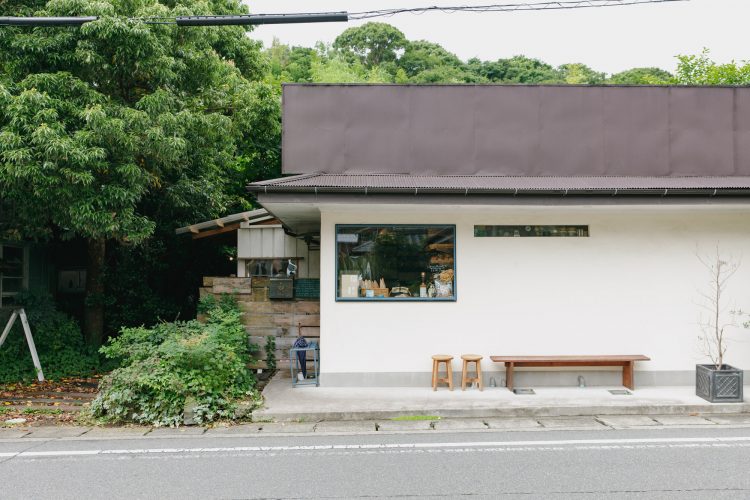
As soon as Boulangerie Yamashita opened, its bread became the talk of the town. More and more people visited from neighboring communities as well. Then, two years after its launch, the café area opened at the back of the store.
“I loved Scandinavia and interior design, but when I quit the furniture business, I felt like I’d given up everything to do with both. I hadn’t even kept my favorite housewares or the interior items I’d collected. But then when we decided to set up the café area, I managed to convince myself that it was okay to draw on my previous experience. I wanted to turn the café into the kind of place that personally appealed to me. I planned on outfitting it with objects that emanated the warmth of human hands, made by people with whom I’d connected over the years.”
Yusaku decided to order all the tableware from ceramic artist Maeno Tatsuro, a friend from his Chigasaki days.
“I ticked off a lot of people and lost a lot of relationships by suddenly quitting my job and leaving Chigasaki. Yet Tatsuro treated me no differently than before. I guess it was nothing out of the ordinary for him. Still, I was really grateful to him. That’s why I turned to him for the tableware for our café.”
Further, Maeno Tatsuro had studied design in Denmark, which was thus the source of his artistic vision. His wares would therefore be perfect for using at the café, Yusaku felt.
From Tatsuro’s pieces, Yusaku selected a set of yellow dishes.
“It may be more usual to choose white for the tableware used at a café or restaurant. The reason I chose this color, though, was that I wanted dishes that were the same color as the rapeseed flowers that motivated us to move to Ninomiya in the first place.”
The plate is just the right size for a pair of buns. Its plain, unpretentious design, well suited to daily use, perfectly matches the bakery’s bread and pastries, which are intended to be as simple as possible. Above all, it’s characteristic of Boulangerie Yamashita to have chosen such a color, which resembles that of the rapeseed flowers that brought the family to this town.
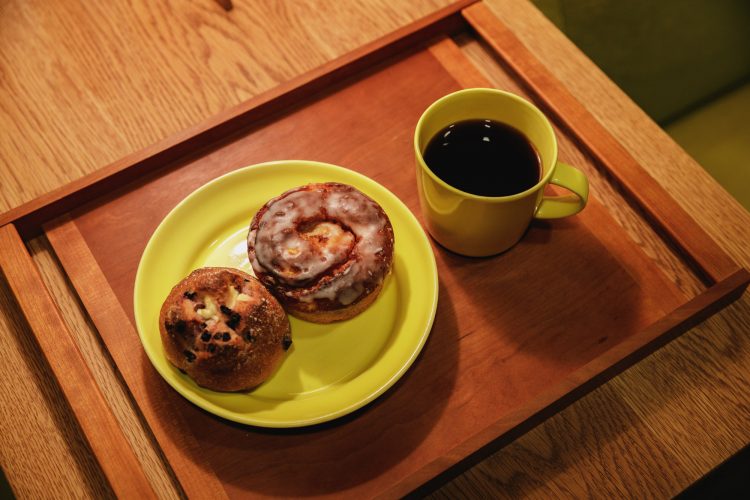
▲The bakery currently offers some 35 breads and pastries. The most popular include the Cinnamon Roll (right) and the Blueberry and Cream Cheese Bun (left).
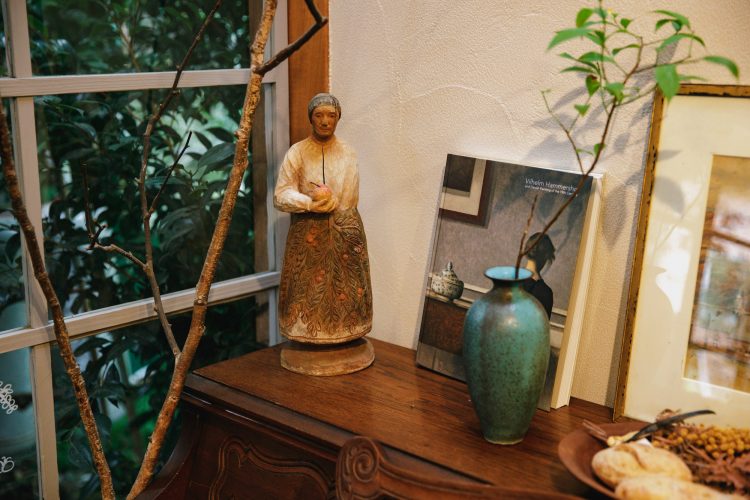
It’s not just the tableware and the furniture that have special associations for Yusaku. The very bread he makes contains something passed on to him.
“When I started the bakery, I agonized over how to make my bread distinctive. Then a friend living in Denmark brought me some apples. ‘I have these organically grown apples in my garden,’ they said. ‘Why don’t you use them as a starter for your yeast?’ So I fermented the apples and added flour to make yeast. Then, as I prepared each batch of dough, I would keep adding to that yeast. It still goes into every loaf of bread I make today. Which means my bread is an ongoing testament to my own passion for things Danish and my friend’s kindness. Maybe those are humble qualities. But breadmaking, which depends on the power of fermentation, allows me to give them shape and keep them alive indefinitely. That’s the incredible thing about bread. I think it’s wonderful to be able to pass something on not just in the mind or metaphorically, but in physical form.”

▲ Yeast from the fridge. “It’s dormant right now, so it doesn’t look that appealing,” says Yusaku, “but when you stir it and it becomes active, you can see a network of strands from the side as it ferments.” Close up, it smells faintly sweet.
However, Yusaku continues, “while the interior, the dishes, and the bread are all inspired by what I hold dear, it’s not something I wish to proclaim loudly.
“It’s not something that’s constantly at the forefront of my mind. It’s just that there are things around me every day that I’ve chosen and will always treasure and pass on. People may notice, but even if they don’t, it doesn’t matter. Those things are still there, and that, I believe, is deeply enriching.”
Determined to begin a new life, Yusaku decided to start his own bakery in Ninomiya. That resolve, coupled with his connections to others and his deep sense of gratitude, has underpinned every choice he has made. Our discussion of yellow tableware ended up offering a glimpse into his innermost thoughts.

Yamashita Yusaku studied in Denmark and then joined a furniture company on his return to Japan. He began a new career as a baker at age thirty-three. In spring 2014, he opened Boulangerie Yamashita in Ninomiya.
Boulangerie Yamashita
1330 Ninomiya, Ninomiya-machi, Naka-gun, Kanagawa Prefecture
Tel: 0463-71-0720
Open from 10: 00 a.m. Closed Thursdays and Fridays
https://www.boulangerieyamashita.com/